President’s message: Transparency in the race to net zero
Reliable Controls president Tom Zaban explores how we can help you foster transparency in the race to net zero.





The signing of the Paris Agreement in 2015 marked a global call to action to address climate change. The built environment is responsible for an astonishing 30 percent of global energy consumption, 30 percent of greenhouse gas emissions, and 50 percent of emissions in major cities. An increasing effort is underway around the world to make the transition to net-zero energy buildings, an essential step in achieving global energy efficiency and large-scale emissions reduction. In August 2018, the leaders of 19 cities, including Copenhagen, London, Los Angeles, Tokyo, Toronto, and Washington DC, signed the Net Zero Carbon Buildings Declaration and pledged to ensure that all buildings in those cities, new and old, will meet zero-carbon standards by 2050. Even more stringent, in the European Union, the Energy Performance of Buildings Directive sets out how Europe can achieve a zero-emission and fully decarbonized building stock by 2050.
WorldGBC and 24 regional Green Building Councils are dedicated to supporting market transformation to 100 percent net-zero carbon buildings in an initiative called the Advancing Net Zero project (Figure 1). Canada Green Building Council was the first to launch a dedicated Zero Carbon Building Standard in May 2017, making carbon emissions the key indicator for building performance, closely followed by Brazil, Australia, South Africa, the United States, Germany, and the United Kingdom.
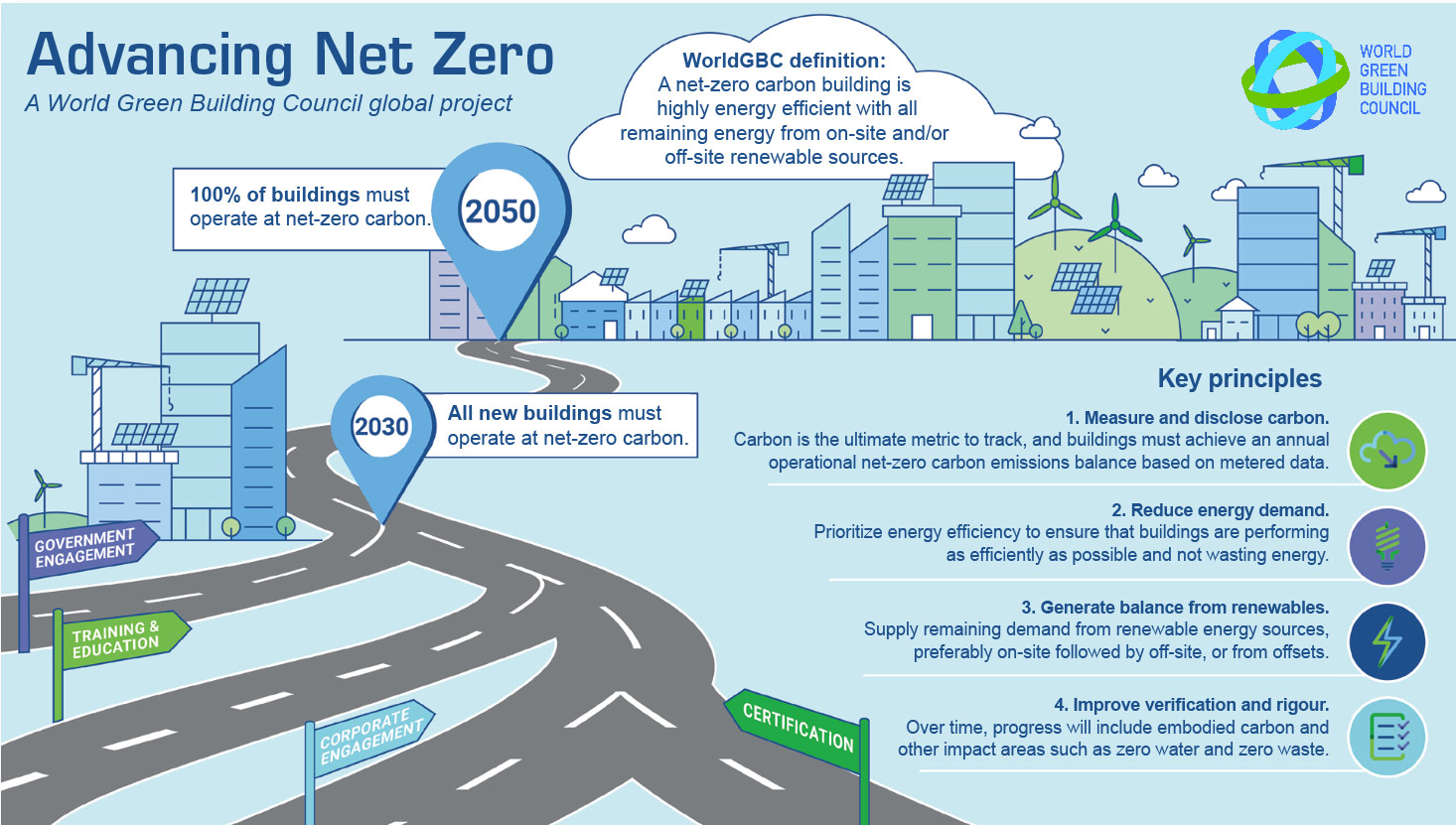
Figure 1: WorldGBC Advancing Net Zero initiative.
Net zero is one aspect of the broader shift toward green buildings, which reduce the overall impact of the built environment on human health and the natural environment by efficiently using energy, water, and other resources; protecting occupational health; and reducing waste, pollution, and environmental degradation. Net zero does not mean a structure produces zero emissions; rather, it generates an amount of energy through solar, wind, and other renewable methods equal to what it consumes from nonrenewable sources. WorldGBC recognizes that constructing or retrofitting buildings to generate 100 percent of their energy needs on-site is not always feasible. Instead, it focuses on advancing the development of green buildings that are energy efficient and powered by renewable resources, both on- and off-site.
The development of net-zero buildings has become possible largely through advancements in technology, design, and operational practices. Any office, school, hospital, or other building can be built or converted to be highly energy efficient, with operational energy use from on- or off-site renewable resources, to achieve net-zero carbon emissions.
To reach this ambitious target and transform the building and construction sector, a coordinated effort between business, government, and nongovernmental organizations is required. Ten regional Green Building Councils around the world are already working to adopt four guiding principles as set out by WorldGBC:
To optimize building efficiency and address energy conservation, building operators and designers can look at internal components as a factor of sustainability. In commercial and institutional buildings in Canada, energy is consumed primarily for space heating, followed by auxiliary equipment, lighting, water heating, and space cooling (Figure 2). These systems are optimal areas for energy analysis and reduction measures. Innovative building automation systems provide an effective means to measure, analyze, and improve a building’s operational efficiency.
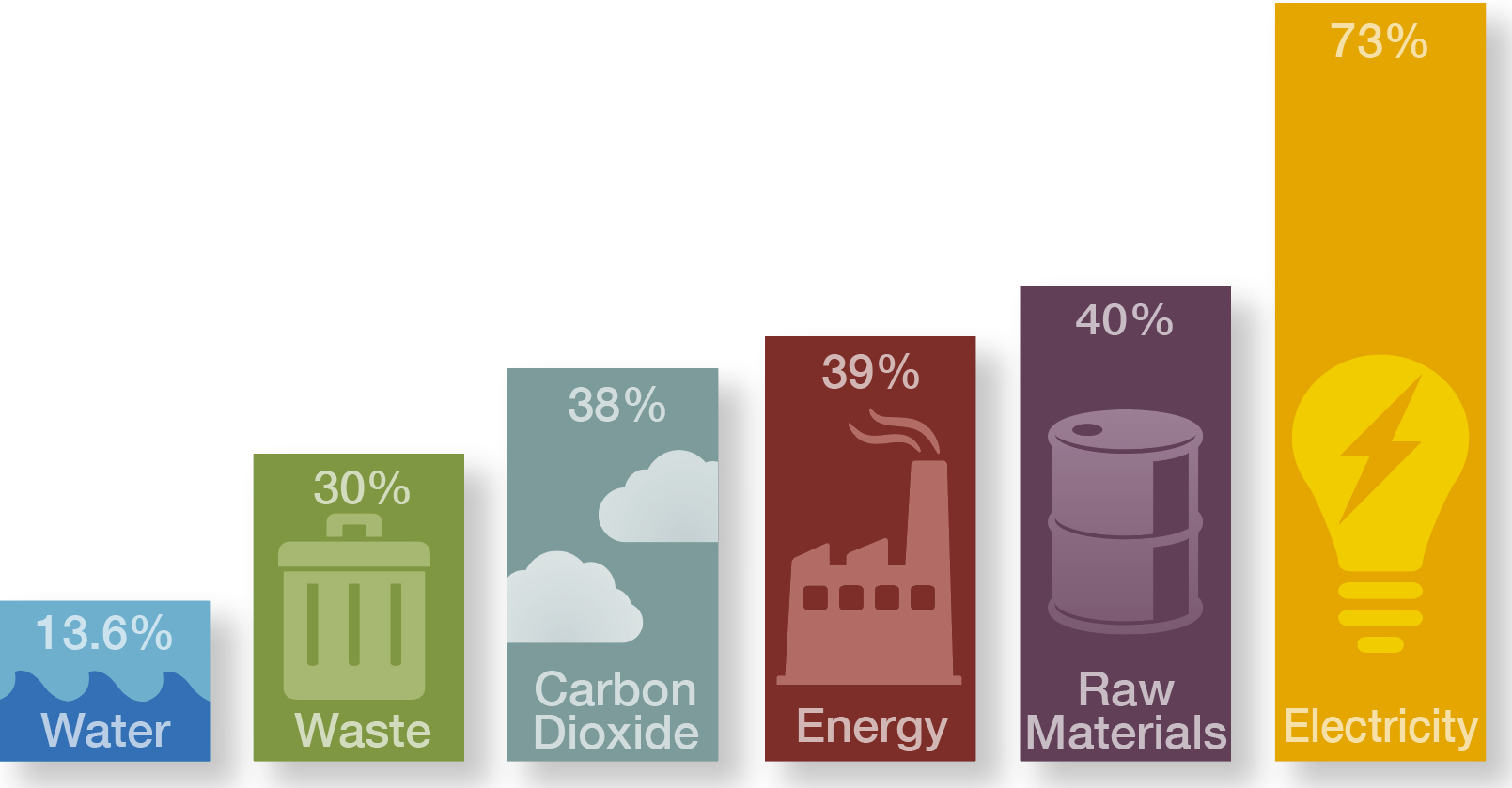
Figure 2: Percentages of the total resources consumed and outputs emitted in North America by commercial buildings.
A key component to achieving net-zero emissions is accurate, actionable energy data. Reliable Controls offers a suite of products to assist architects and engineers to improve building efficiency and reduce harmful emissions.
Beyond the goal of net zero, WorldGBC envisions the next step to be zero-carbon buildings, or buildings that rely on both energy efficiency and entirely on-site renewable energy production to reach a balance of energy consumed and energy produced (Figure 3).
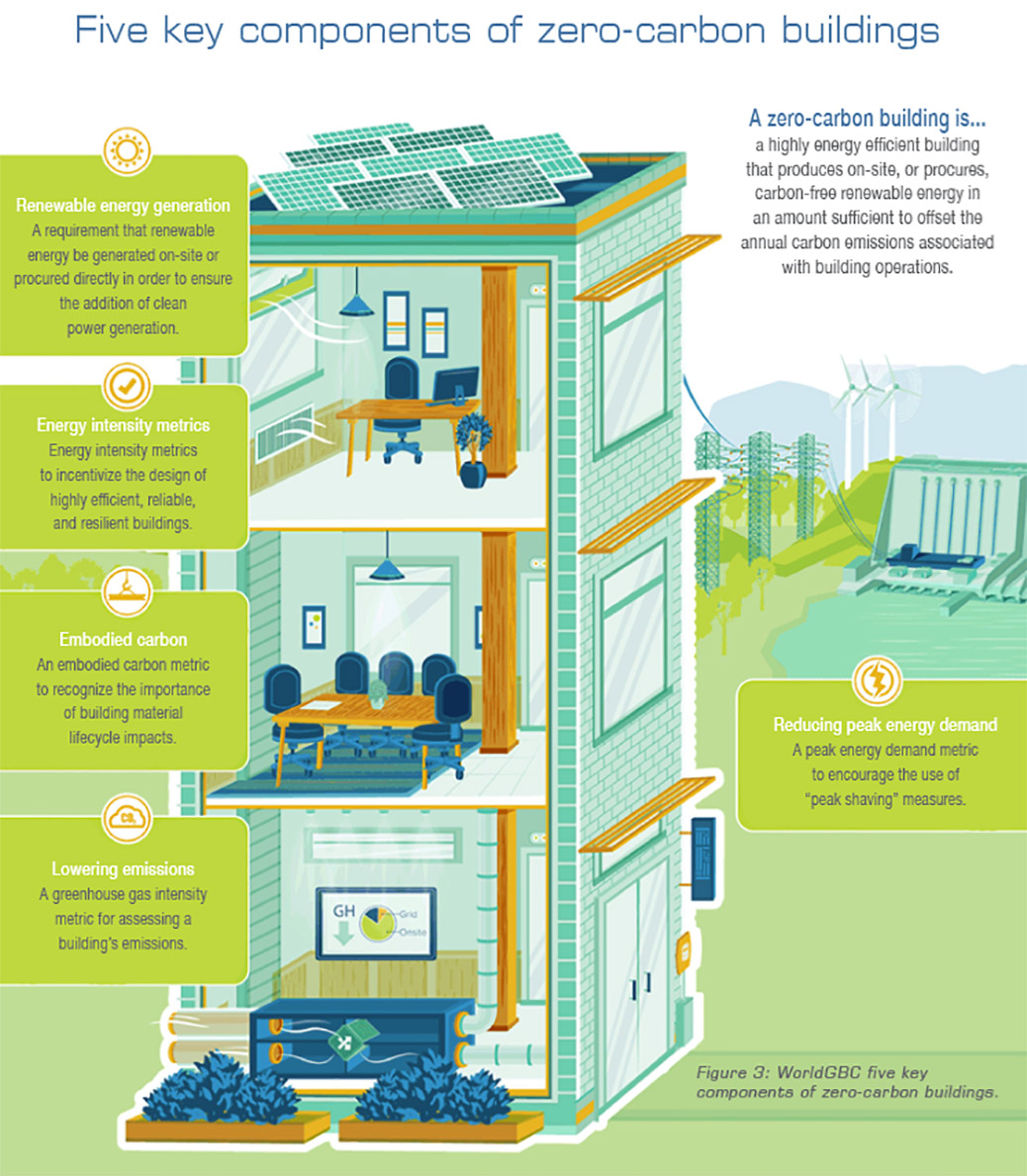
At Reliable Controls, we take the art of building sustainability seriously. The organization is a member of the US and Canada Green Building Councils and is committed to the goal of net-zero emissions by 2050. Reliable Controls is proud to have obtained Leadership in Energy and Environmental Design (LEED) Platinum certification for our corporate head office in 2013. In addition, over 40 percent of LEED Platinum–certified commercial facilities in our province of BC depend on Reliable Controls.
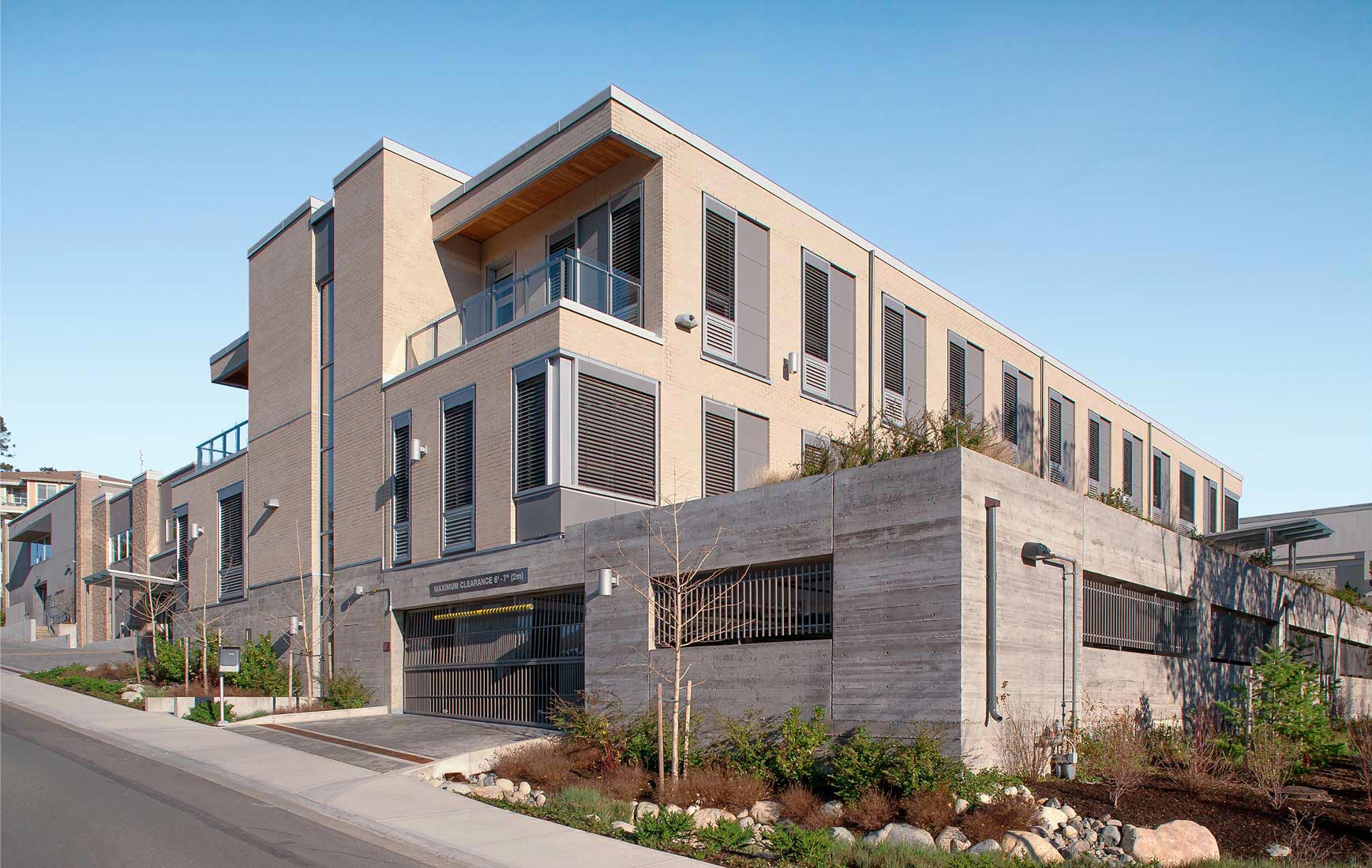
Reliable Controls HQ in Victoria, Canada, is LEED Platinum certified.
In practice, we have observed firsthand the benefits of an efficient building automation system—not only in terms of economic and environmental interests but also social gains. Occupants at our Victoria headquarters reported a 93 percent overall comfort and well-being level in a recent satisfaction survey. Natural fresh air enters the building through many windows and trickle vents and is circulated through offices and workstations, then through an open atrium before being exhausted through a wind tower. Trickle vent technology and radiant floor hydronic heating provide continuous comfort based on the time of year, and personal space preferences can be set by each occupant using our myControl application. Individual lights are controlled and comfort settings are initiated when an employee uses their access card to enter the building.
The green roofs at Reliable Controls headquarters help preserve the natural landscape and reduce the building’s cooling requirements. We have a number of improvements planned that will allow us to continue the downward trend in energy consumption we have achieved since the company first occupied the LEED building in 2012. The flexibility of the Reliable Controls system means changes are easy to implement and monitor.
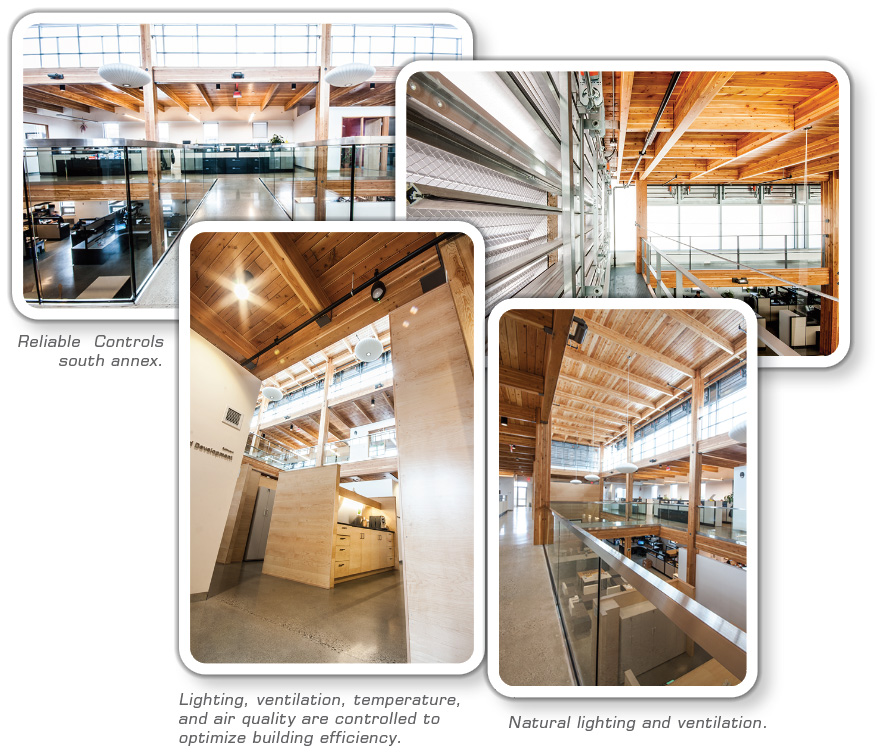
Beyond our home base, many city and industry leaders are working to address climate change and reduce carbon emissions from commercial buildings.
In 2019, ASHRAE, creator of the BACnet standard that all Reliable Controls products utilize, announced plans to renovate its world headquarters in Atlanta, Georgia, with the intent of net-zero energy efficiency.
In Australia, buildings that have achieved Green Star certification produce a whopping 62 percent fewer greenhouse gas emissions than average Australian buildings. Buildings certified by the Indian Green Building Council have seen energy savings of up to 50 percent. And LEED-certified buildings in the United States and elsewhere consume 25 percent less energy than their non-green counterparts.
Canada’s green building industry generated more than $23 billion in GDP and represented nearly 300,000 full-time jobs in 2014. In the United States, green building accounted for nearly 3.3 million jobs in 2018. Owners of green buildings report a 10 percent increase in asset value over traditional buildings. Working toward net-zero buildings makes good economic sense.
The City of Lancaster, California, has a program that enables residents and businesses to install solar energy systems at a lower cost. All single-family homes built in Lancaster since January 1, 2014, are required to have a minimum number of solar photovoltaic collectors. Additional installations in facilities around the city are estimated to generate revenue of $20 million over the life of the project.
To achieve the goal of 100 percent of buildings operating at zero carbon by 2050, WorldGBC believes there must be a rapid change to the building and construction sector. This will involve the retrofit of existing buildings and the construction of all new buildings to net-zero or zero-carbon standards. Thirty-one businesses and organizations, 26 cities, and six states and regions are signatories to the WorldGBC Net Zero Carbon Buildings Commitment. Is your city on the path to reach net-zero operating emissions by 2050? How can Reliable Controls help you and your partners optimize energy efficiency in your projects? We are excited to work with you and further our technology to create a greener future.


Reliable Controls president Tom Zaban explores how we can help you foster transparency in the race to net zero.
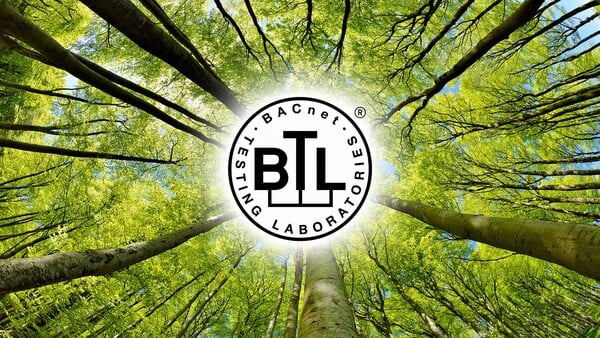
Reliable Controls president Tom Zaban reflects on 30 years of the BACnet protocol.
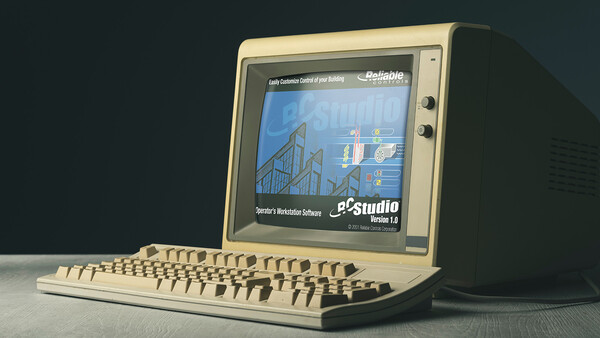
Celebrating nearly 25 years of RC-Studio, the backbone of our suite of building automation tools.

Learn how Reliable Controls promotes a circular economy, starting with design choices.

Learn about encouraging outcomes of the UN Climate Change Conference and how building automation plays a critical role in achieving global decarbonization goals.

What does a Zamboni have in common with an arena's ventilation system?

When every second matters, players should be set up for success. The building automation system can do just that.
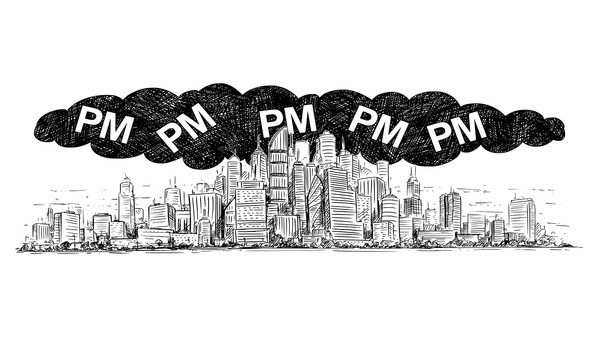
Discover particulate matter. Why does it matter, and how can you measure it?